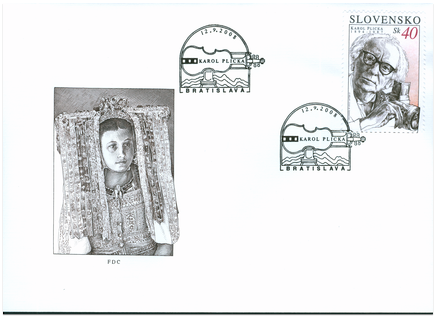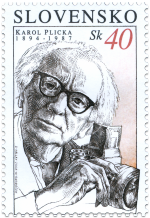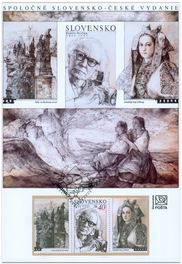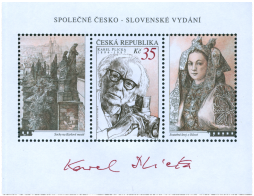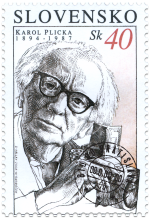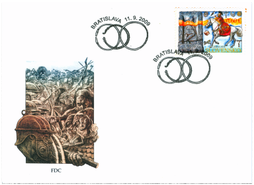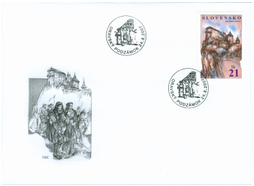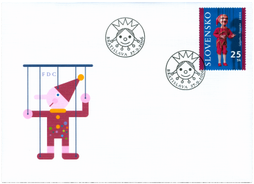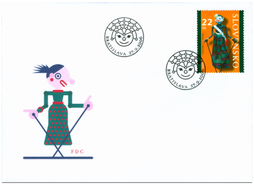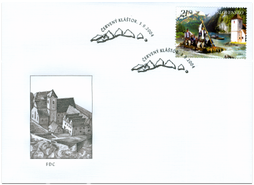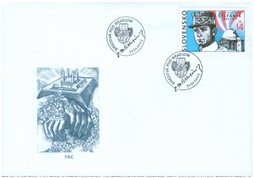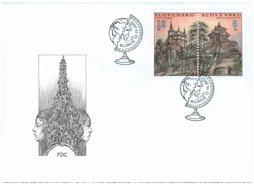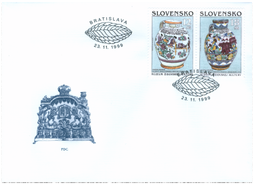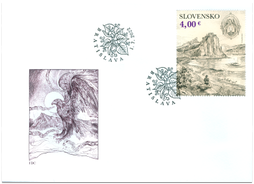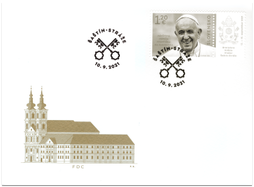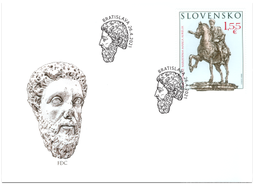FDC 427 Date of issue
12.09.2008 Face value
40.00 Sk Sell price
1.20 €
© Slovak Post, 2008 Karol Plicka was the key Slovak cultural personality of the first half of the twentieth century. The founder of cinematography and a pioneer of photography, he was among the first Slovak photographers to base his work on a clearly formulated conception. Born in 1894 to Czech parents in Vienna, he became a professional musician. In 1927 – 1931 he studied musical folkloristics and ethnology at the Faculty of Philosophy of Comenius University in Bratislava. Following the formation of the independent Czechoslovakia, he joined Matica Slovenská [the leading Slovak national and cultural institution – translator’s note] to collect and record the notes and lyrics of traditional Slovak folksongs in the period 1924 – 1939. Plicka was well aware of the complexity and inter-relational nature of folk art and expression. But he attempted to capture the environment residing at the root of Slovak folksong – either through drawing or, more often, photography. This concept led him to make his first collection of photographs of people, countryside, traditional architecture, interior elements, tools, work, observances, and customs of Slovak folk. Selected photographs from this collection were used in artistic postcards published by Matica Slovenská between 1924 –1926. Plicka anticipated the imminent dissipation of the spiritual and aesthetical values of traditional folk culture. This prompted him to put immense and consistent effort into their recording, not only by writing and photographing, but also – in so far as the technology of his day allowed through gramophone recording and film-making. The result was his synthetic opus Zem spieva (The Earth Sings, 1932 – 1933), the first sound-film in the history of Slovakia and modern film poem that aspired to become an ‘ode to life in the Slovak countryside from spring thru winter’. It seems that, at least initially, Plicka’s experience with the almost ‘pre-historic’ religiosity and poverty of Slovak people moved him to take a strictly and purely documentaristic approach to his work. However, it was later in the 1930s that the monumental nature of his photographs - somewhat similar to the paintings of Martin Benka - prevailed and Plicka managed to enhance his works further by a strong poetical setting. These are the photographs that were later used in the photo-book Slovensko (Slovakia, 1937) – the first ever Slovak photographic publication with numerous popular re-editions. In later years, Plicka published several other photographic projects and worked at the newly-founded Film School of the Academy of Performing Arts in Prague. He passed away in 1987 in Prague. Aurel Hrabušický
Show lessSimilar products
FDC 460 Date of issue
11.09.2009
FDC 403 Date of issue
24.08.2007
FDC 384 Date of issue
27.09.2006
FDC 383 Date of issue
27.09.2006
FDC 333 Date of issue
03.09.2004
FDC 293 Date of issue
03.05.2003
FDC 273, 274 Date of issue
12.10.2002
FDC 196, 197 Date of issue
23.11.1999
FDC 769 Date of issue
01.07.2022
FDC 748 Date of issue
10.09.2021
FDC 740 Date of issue
26.04.2021
FDC 739 Date of issue
16.04.2021
© 2024 POFIS - Postal philatelic service. All rights reserved

